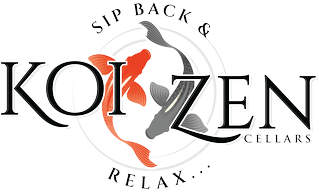Tannins Drying your Tounge Out?

So you sip that expensive Napa Cab packed with tannin and all of a sudden your lips are sticking to your teeth, your mouth is all puckered up and you feel like you just drank all of the sands in the Mohave desert. Sounds pleasant, doesn’t it?
Well to some, the answer is a resounding yes; to others, not so much.
Question:
Can a Glass of Wine Change your Life?
Well, it is tannins that are generally responsible for that “drying” sensation. Tannins are a naturally occurring polyphenolic biomolecule that occurs in many different plants and trees. Some foods have a lot of tannins such as red wine, cinnamon, black tea, beer, chocolate, legumes, and nuts. Tannins are also used in the production of leather during the “tanning process”.
Many people mistakenly refer to the wine as being “dry” as opposed to being “tannic”. In actual sense of the words, “dry” refers to sugar content as in “sweet wines” or “dry wines”. In this case, we are talking about tannic wines.
Generally, most people are not sensitive to tannins which play an important antiviral, antioxidant, and antimicrobial role; however, for a few people sensitive to tannins, it may trigger migraines. On the good side, many researchers claim tannins also prevent arterial hardening and supports heart health.
Many people blame sulfites for the headaches; though it is probably tannins, histamines or dehydration that is getting the best of you. A typical wine contains about 75 parts per million sulfites, that cola probably has 350 parts per million and those fast-food french-fries may stack up around 2,000 parts per million.
Many plants use the bitter, astringent taste of tannins to ward off parasites and predators when the plants are unripe and immature. The tannins are also responsible for the color change of flowers and leaves during the autumn and generally, the tannic levels decrease as the plant/fruit matures.
What the pucker about?
But when you consume a tannic food such as red wine, why does it pucker you up?
Well, the tannins bind to the proteins in your mouth. When you think about it, your mouth is a big piece of meat. The tannins molecules bind to the protein molecules of your mouth causing them to contract and shrink causing a physical puckering effect.
Now if you pair that tannic wine with an alternate protein source (i.e. that big steak) the tannins will bind to it as well and will not attack your mouth as much. This is why a highly tannic wine such as a Cabernet Sauvignon is so often paired with steak. When the tannin molecule binds to the protein molecule the molecular chains get longer producing a “creamy” sensation on the palate.
Fats also produce the same effect and this is why a tannic food such as chocolate can be paired so well with a tannic wine. The fats in the chocolate bind with the tannins and smooth out the sensation.
Think about how well cheese (high in fat) pairs with tannic red wine and other fatty foods such as cured meat (salami and pepperoni).
Most tannins in wine come from the skins, seeds, and stems. Red wine is typically higher in tannin since it is fermented with the skins and seeds. Whites that are not fermented with skins, seeds, and stems so are less tannic.
Many Bordeaux varietals such as Cabernet Sauvignon, Merlot, Cabernet Franc, and Petit Verdot are typically high in tannins. Other notable wines would be Zinfandel from Dry Creek Valley, Paso Robles, or from Italy where it is called Primitivo. The Rhone varietals such as Syrah and Petite Sirah stack up there as big tannic wines along with the Italian varietals Barbera, Nebbiolo and Sangiovese.
Remember; pair a big tannic wine with proteins and fats to reduce the astringency and to smooth out the texture.
If you want to avoid the tannins, stick to the white wine, blushes, and rosé.
So the next time you are in a tasting room and some want-to-be wine snob says this wine is too “dry”, just say “excuse me, but the proper term is tannic” and bask in the glory of your knowledge.
Cheers,

